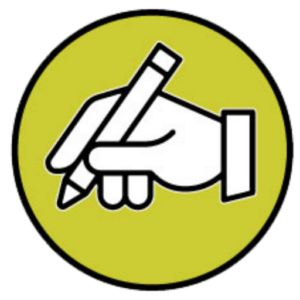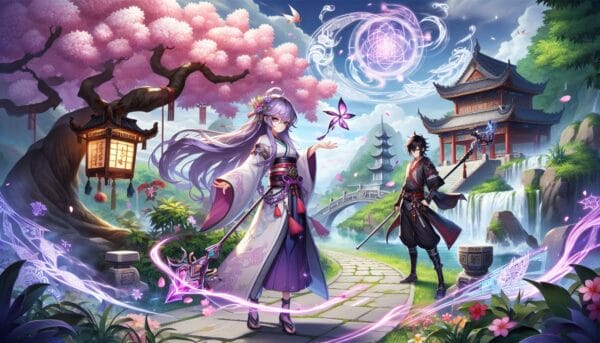Anime, a rich and diverse art form, continues to captivate audiences and artists alike. As we step into 2024, the landscape of anime drawing is evolving, offering a plethora of styles and characters to explore. Whether you’re a seasoned artist or a beginner looking for cool anime drawing ideas, this article will guide you through various styles and characters, ensuring that your journey in drawing anime is as dynamic and creative as the medium itself.
Introduction to Anime Artistry
Anime artists bring characters and stories to life with their unique style characterized by vibrant colors, dynamic expressions, and exaggerated features. Digital drawing has opened new realms of possibility, allowing artists to explore this genre with unprecedented flexibility and creativity. This guide also delves into the digital techniques that can help you harness the full potential of anime art.
Anime Drawing Ideas for 2024
Embracing the Thin Lines Trend
The trending thin lines animation style, gaining traction in 2024, focuses on using thin, precise lines to create detailed and hand-drawn looks. This style is perfect for artists who admire the intricacies of cool anime drawings and aim to capture the essence of their favorite anime characters with finesse and clarity. Consider using this technique to draw characters from popular shows like “Naruto Shippuden” or “Hunter x Hunter,” focusing on the delicate details that define their personalities.
Interactive Anime Figures: A Source of Inspiration

Goku stands as an iconic figure within the realm of anime, recognized globally for his indomitable spirit and unwavering dedication to righteousness. As a central protagonist in the beloved series Dragon Ball, Goku embodies the essence of heroism, engaging his adversaries with resolute determination. He proclaims himself as the guardian of all that is virtuous, a stalwart defender against the forces of evil. In stark contrast to antagonists who seek destruction, Goku’s noble quest revolves around maintaining harmony and safeguarding humanity from peril.
“I am the hope of the universe. I am the answer to all living things that cry out for peace. I am protector of the innocent. I am the light in the darkness. I am truth. Ally to good! Nightmare to you!”
~ Son Goku (Dragon Ball Z)
In the realm of anime figures, 2024 is witnessing a surge in interactive features like LED elements and app-integrated functionalities. Drawing inspiration from these figures can add a new dimension to your art. Imagine capturing the dynamic essence of “Demon Slayer’s” characters with integrated light effects in your drawings, or recreating the intense emotion of “Attack on Titan’s” final season through your artwork.
Nostalgia Strikes Back
Nostalgia is playing a significant role in 2024’s anime trends. Classic series like “Neon Genesis Evangelion” and “Cowboy Bebop” are experiencing a resurgence, offering a treasure trove of characters for artists to draw. These iconic series provide a blend of complex storylines and unique character designs, ideal for artists interested in exploring deep and meaningful themes through their art.
Exploring Diverse Anime Styles
Anime art styles range from the cute and colorful Kawaii style to the more detailed and realistic Seinen style. For those who adore the Chibi style but seek something more proportional, the Kawaii style, characterized by bright colors and playful expressions, is a delightful choice. If you lean towards deeper narratives, try the Seinen style with its realistic character designs and darker color palettes.
Characters to Draw for Practice
- San from Princess Mononoke: Known for her fierce demeanor, San is perfect for artists interested in warrior-like characters.
- Guilmon: A blend of fearsome design and friendly nature, Guilmon offers a unique contrast for artists to capture.
- Marin Kitagawa: Her vibrant personality and gyaru-inspired style make Marin an exciting character to draw.
- Levi Ackerman: A complex character from “Attack on Titan,” Levi’s deadpan glare and combat prowess offer a challenging yet rewarding drawing experience.
Choosing the Right Software
Before you begin creating anime art digitally, you need to select the right software. There are several options available—each with its own set of tools and features.
1. Clip Studio Paint:
Packed with features specifically for manga and anime, this software is a favorite among professional anime artists.
- Ideal for anime and manga artists with a focus on detailed line art.
- Offers a vast selection of pencils and brushes tailored for manga creation.
- Provides readymade halftones and customizable brushes.
2. Adobe Photoshop CC
Known for its versatility, Photoshop is a powerhouse that can handle any digital art project.
- A powerful tool for drawing and postproduction.
- Offers a wide array of brushes and editing tools.
- Best for color tweaking and advanced graphic design tasks.
3. Corel Painter
Known for its realistic brushes, mimicking traditional media.
- Great for artists who want to blend digital art with traditional painting styles.
- Offers various paper textures for different effects.
4. Medibang Paint
- A popular choice among professional manga artists.
- Offers over backgrounds and a wide range of brushes and fonts.
- Known for its natural print manga replication.
5. ProCreate (iPad Exclusive)
- Highly responsive and ideal for on-the-go drawing.
- Over customizable brushes, with the option to create your own.
- Best for artists who prefer working on an iPad.
6. Paint Tool SAI:
- Lightweight and user-friendly, SAI is ideal for beginners and offers exceptional brush properties for line work.
- Experiment with different software to find one that suits your style and needs.

Mastering the Pen Tablet
Drawing with a pen tablet can feel strange at first if you’re transitioning from traditional pen and paper. The key here is practice. Start with basic shapes and lines to get used to the hand-eye coordination required. Work on your line quality, varying the pressure sensitivity for thicker or thinner lines. This is crucial for capturing the essence of anime characters, especially for characteristic elements like expressive eyes and hair.
Selecting the Right Hardware
1. Drawing Tablets: A high-quality drawing tablet is essential for digital anime and manga art. Options like Wacom or Huion offer great sensitivity and precision, crucial for detailed anime drawings.
2. Computers and Monitors: Choose a computer with sufficient processing power to handle graphic-intensive tasks. A monitor with good color accuracy is vital for coloring and shading work.
3. Accessories: Stylus pens with pressure sensitivity, anti-fouling gloves, and ergonomic chairs can enhance your drawing experience and comfort.
Understanding Anime Anatomy: Stylization Meets Precision
In the world of anime, characters are distinguished by their unique anatomical features. Large eyes, exaggerated expressions, and dynamic poses are trademarks of this style. However, a sound understanding of human anatomy is essential as a foundation.
Study popular anime series to observe common proportions like characters’ eyes and anime characters’ heads. Experiment by adjusting these features to develop your unique style, keeping in mind that consistency in proportions is vital for professional-looking art. As you learn anime posing techniques and how to draw popular anime characters, this knowledge becomes invaluable.

Color Theory and Application: Bringing Vibrancy to Your Creations
Color is a powerful tool that breathes life into anime drawings. Understanding color theory is crucial – it involves knowledge about complementary colors and color temperature, which are essential when you “see more ideas” for your artwork.
Digital art software, a critical tool in drawing style, offers an extensive palette for experimentation. Utilize layers to test different color options while maintaining the original line work. This technique is particularly helpful when deciding on the character’s hair color or setting the mood of the scene.

Shading and Lighting Techniques: Adding Depth and Dimension
Shading and lighting are key to giving your anime art a three-dimensional look. Various methods can be employed in digital art, such as cell shading and soft shading. Cell shading, a common technique in anime, involves distinct sections of colors for shadows and highlights, perfect for “character’s face” and “character’s head”.
Soft shading offers a more gradual transition between colors, lending a realistic appearance to elements like “character’s nose” and “anime hairstyles”. Mastering these techniques can significantly enhance your “cool anime drawings”.
Backgrounds and Environments: Setting the Stage
While “drawing characters” is often the focus, the environments, and backgrounds set the stage for your anime story. They need to complement the characters and contribute to the atmosphere, even if they are not overly detailed. Use perspective and scale to create depth, ensuring that backgrounds and characters cohesively inhabit the same space. This can be a game-changer when drawing scenes for your favorite anime or creating original anime ideas.

Final Touches and Effects: Perfecting Your Artwork
The final touches and effects can transform good anime art into great. This involves refining “facial features”, “anime character’s head”, or “character’s hair”, and adding special effects like sparkles or speed lines for dynamic scenes. These elements, when used judiciously, can add a significant impact to “easy anime drawings” or more complex compositions. Remember, the key is subtlety and enhancing the art without overpowering the primary elements.
In 2024, the world of anime art continues to evolve, blending traditional techniques with modern tools and styles. Whether you are just starting with learning to draw or are an experienced artist exploring cool anime drawing ideas, these additional aspects of anime art will elevate your work, making it more engaging and professional.

Conclusion and Practice
Embracing digital techniques for anime art takes time and practice. Be patient with yourself as you explore different tools and styles. Keep learning from fellow artists, online tutorials, and studying your favorite anime artists to refine your artistry. With dedication and creativity, you’ll develop your unique voice within the vibrant world of anime art.
Remember, the journey of an artist is a continual process of growth and discovery. Embrace the digital canvas, and let your anime dreams manifest in vivid detail.


